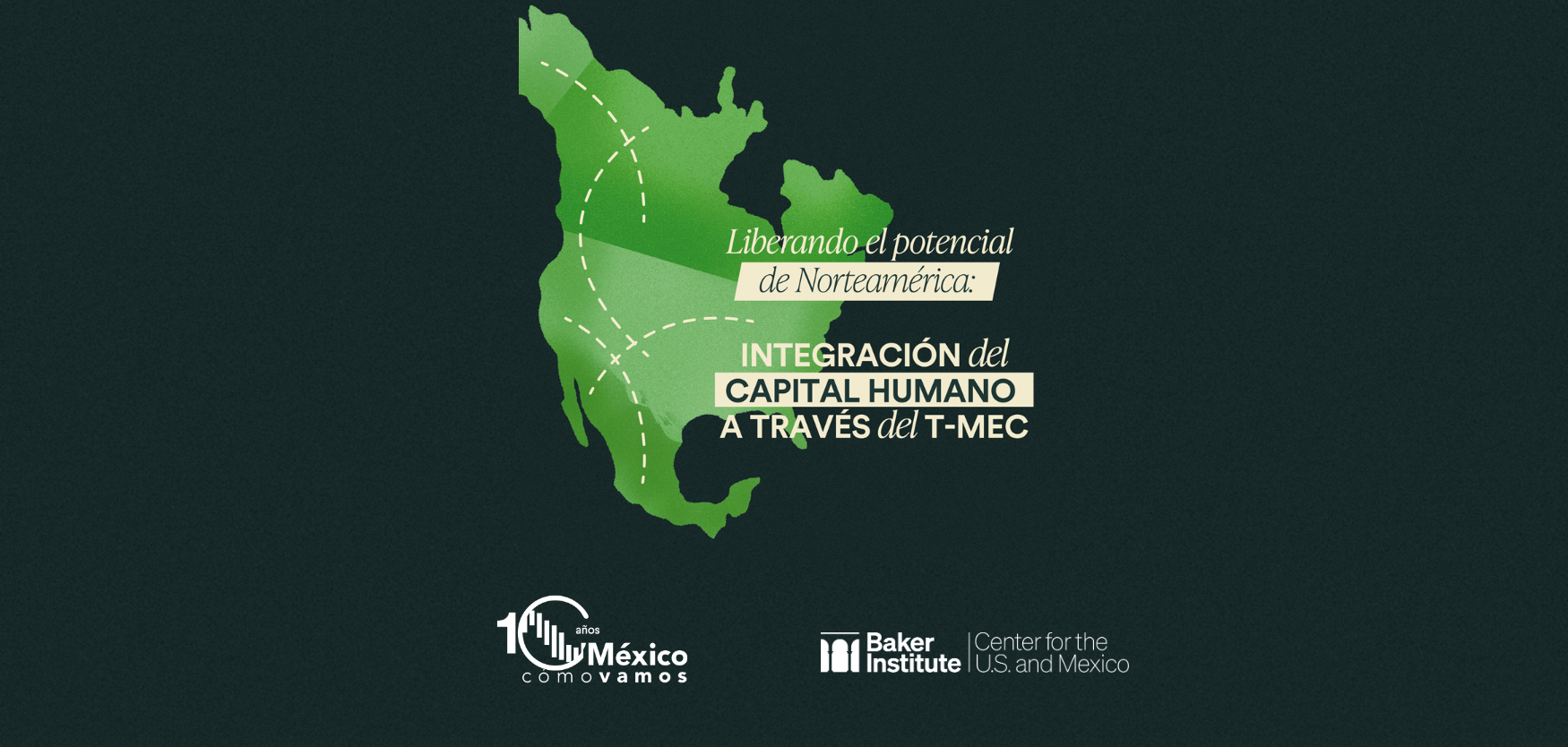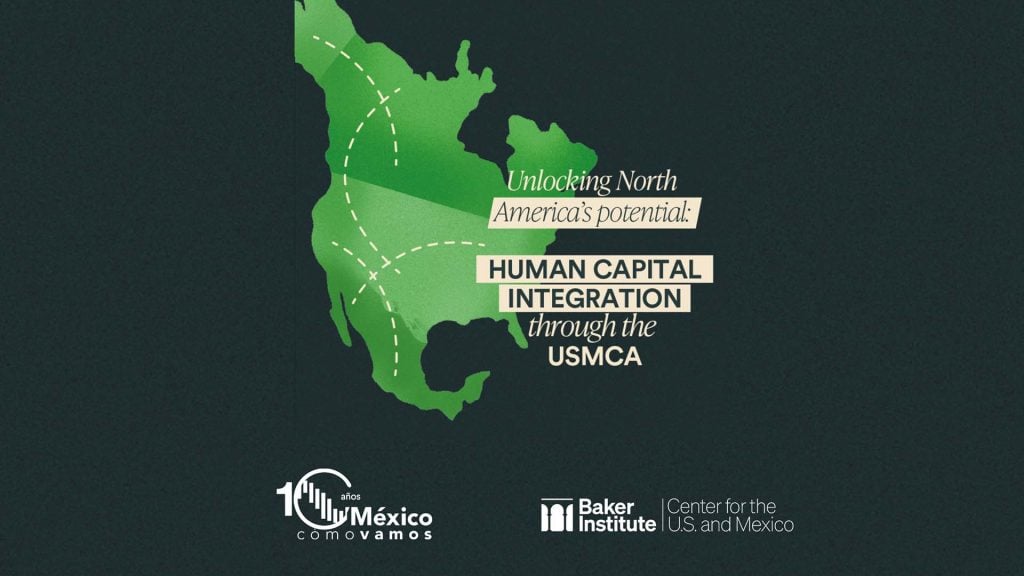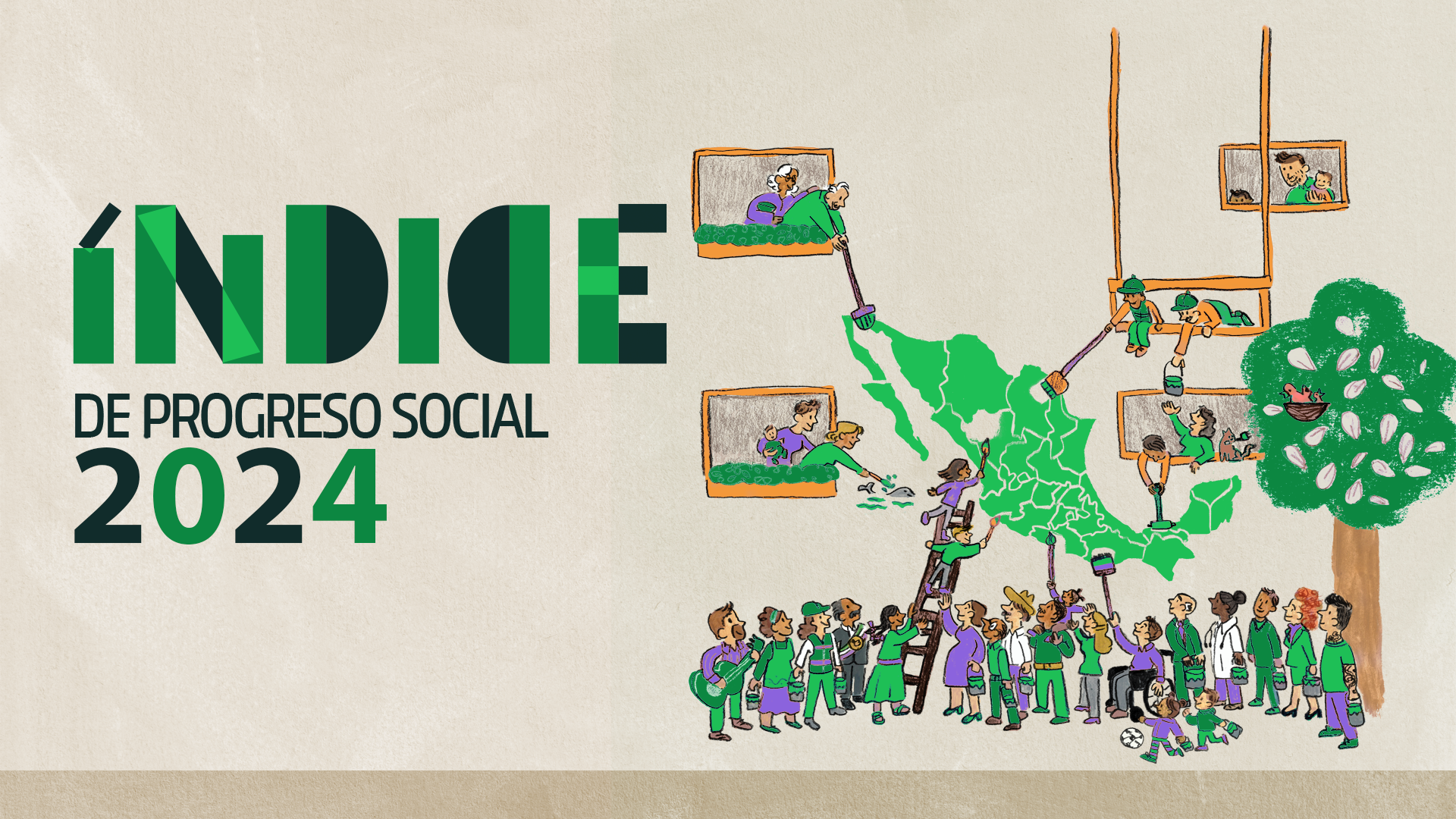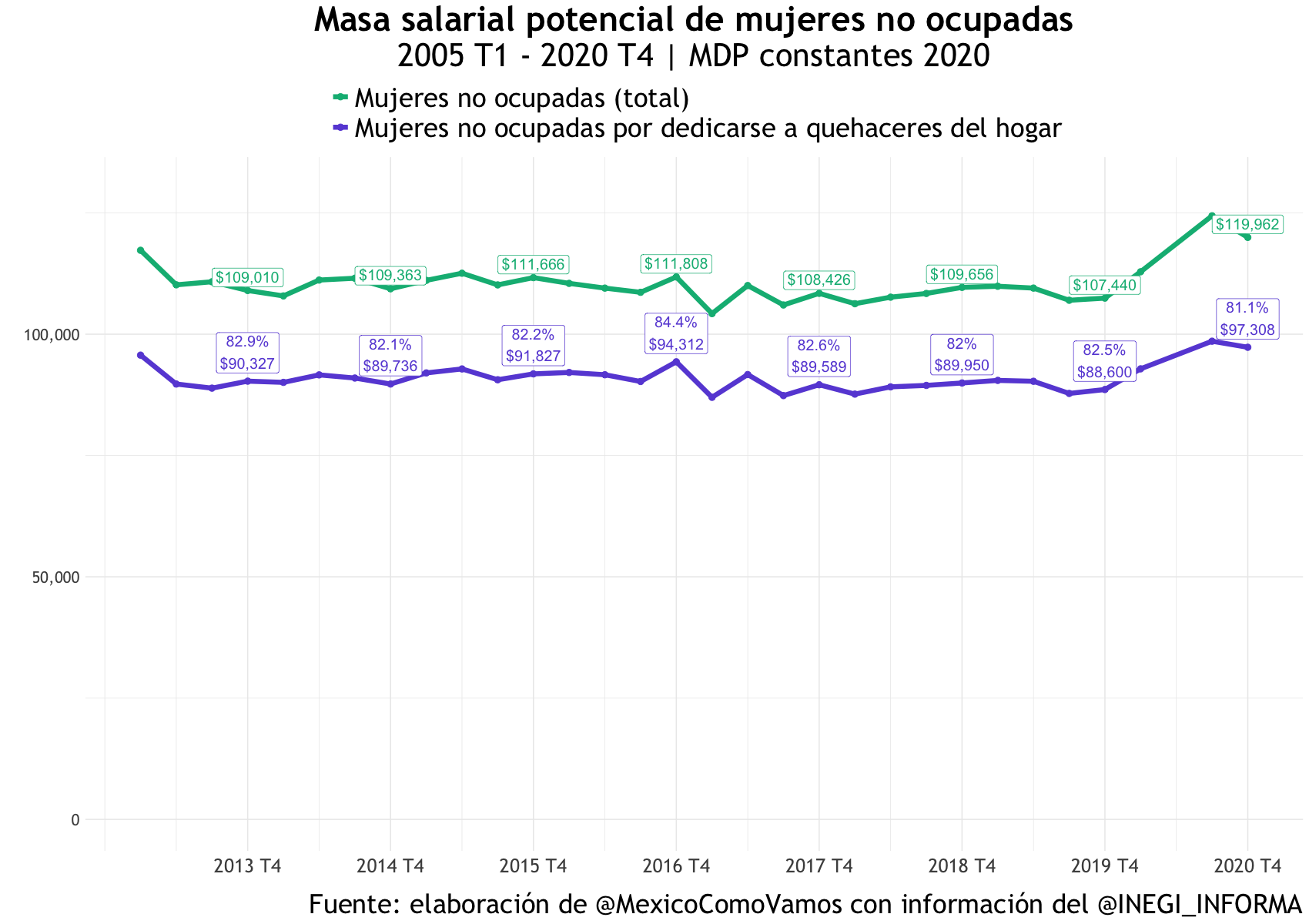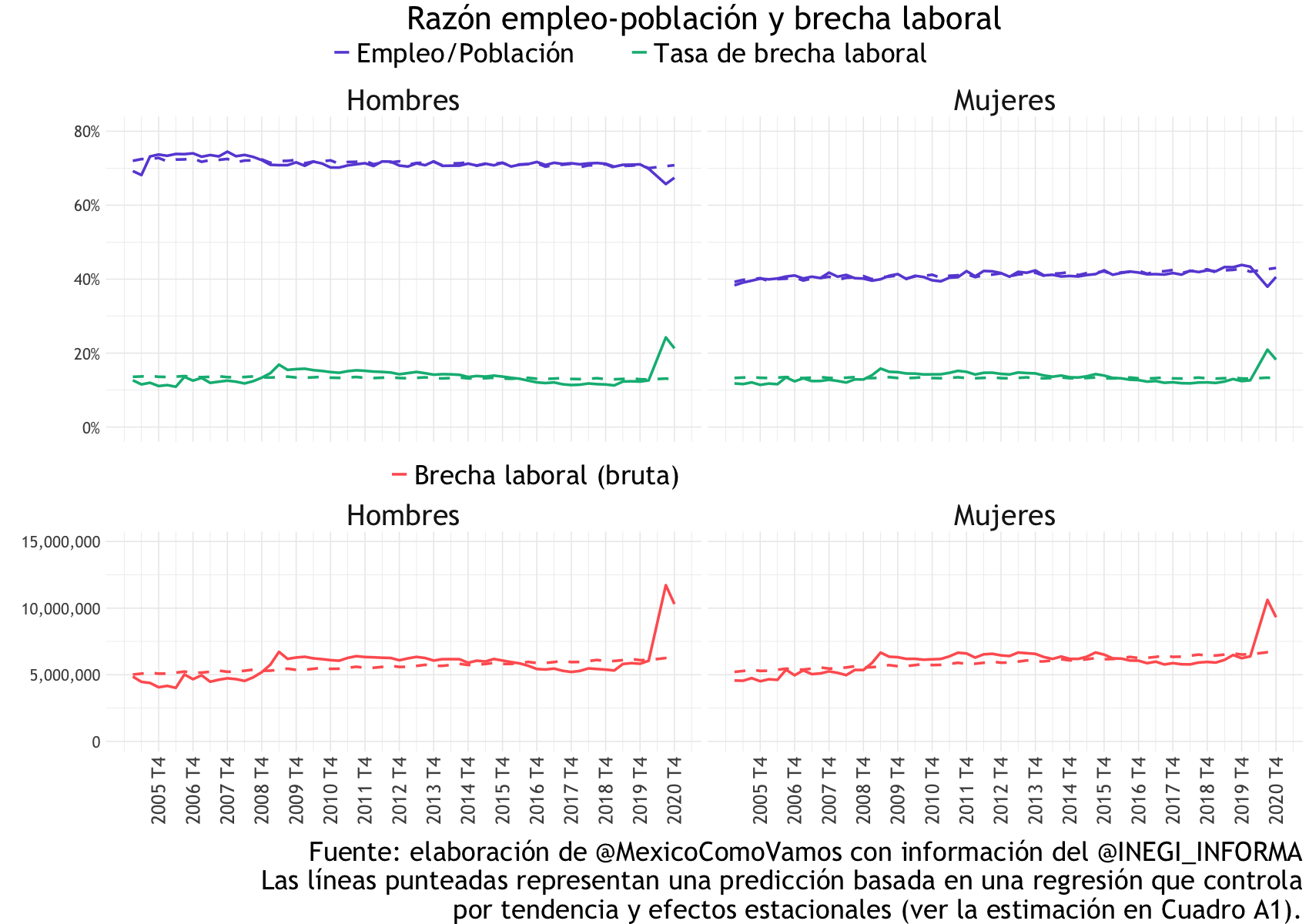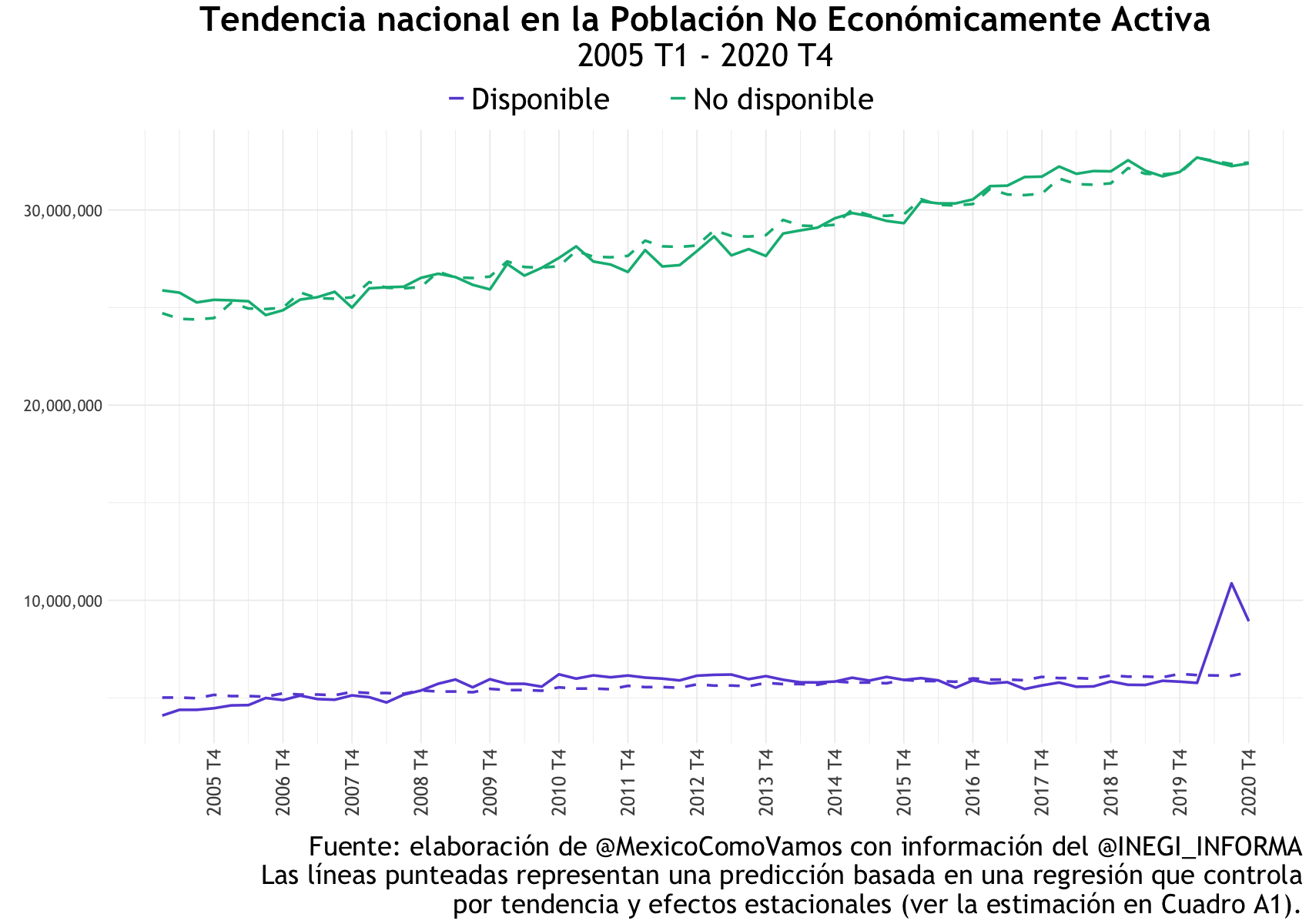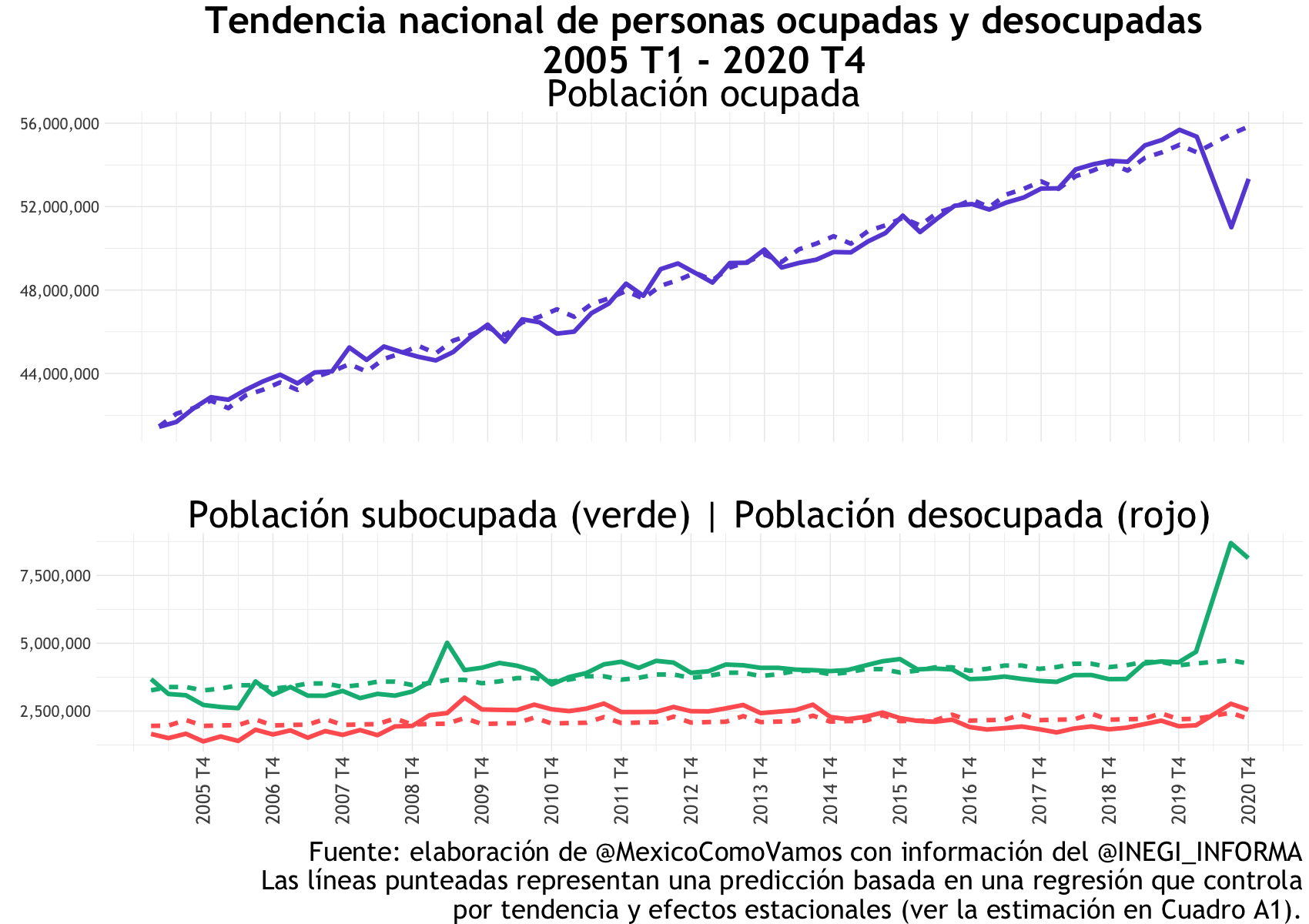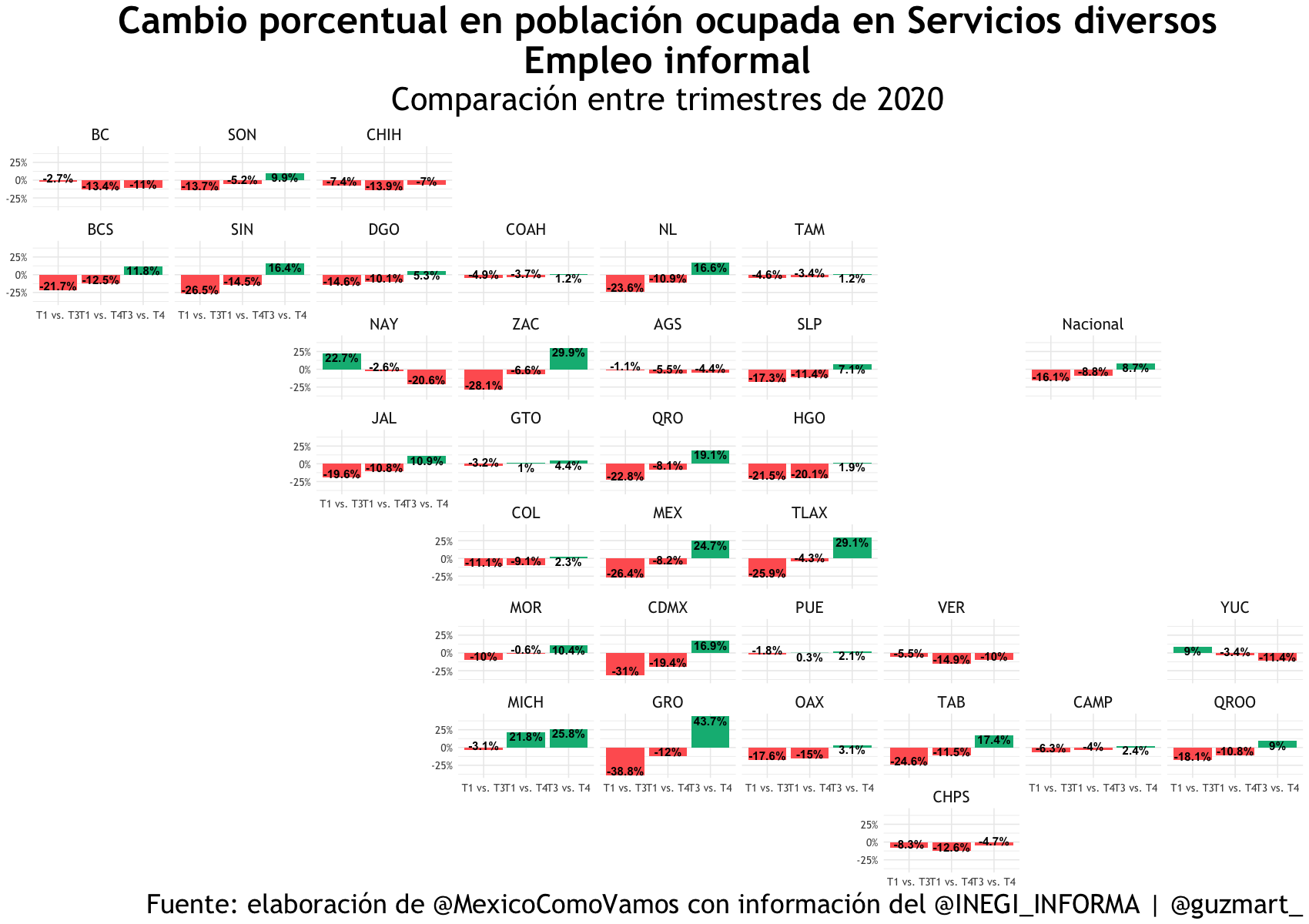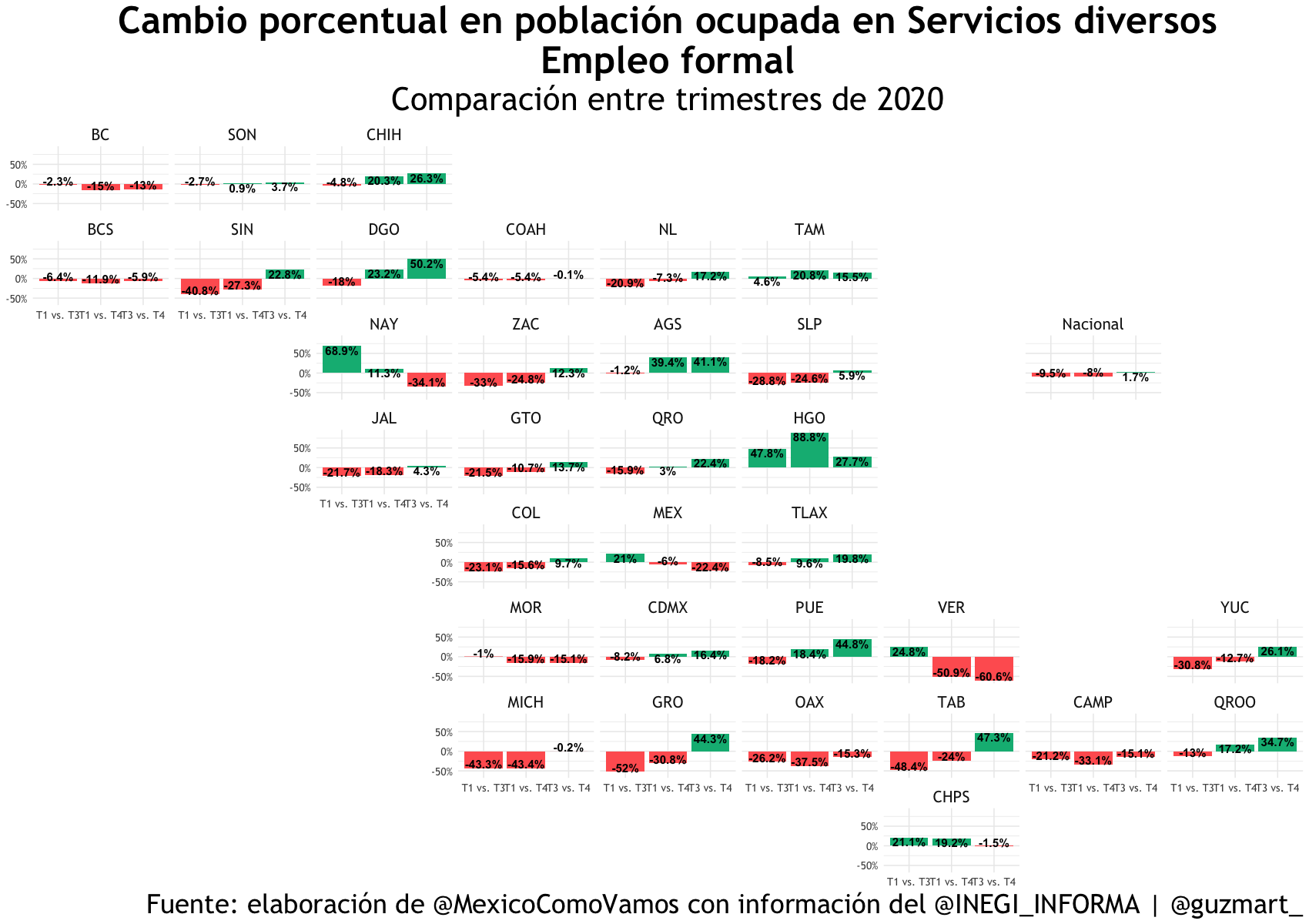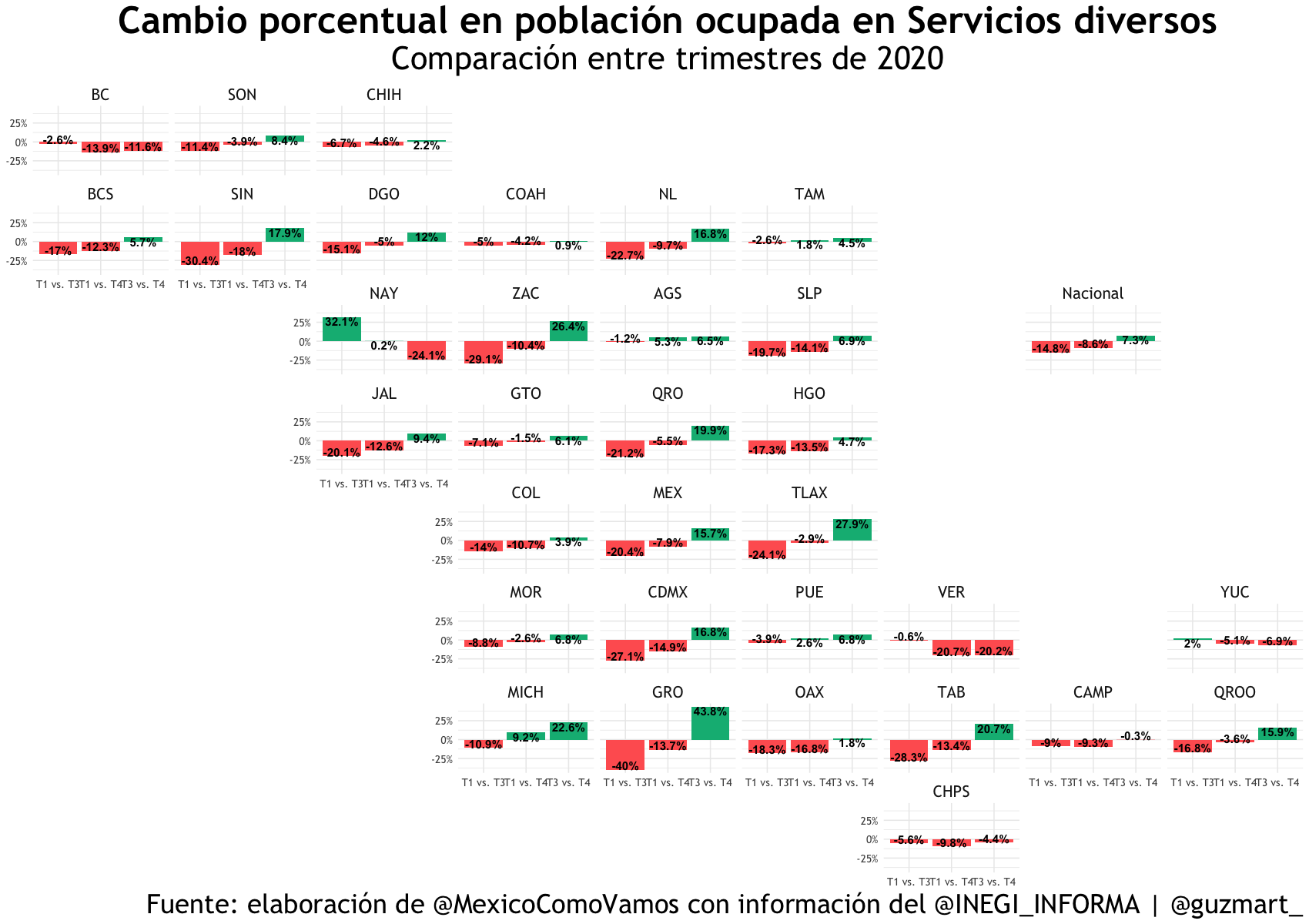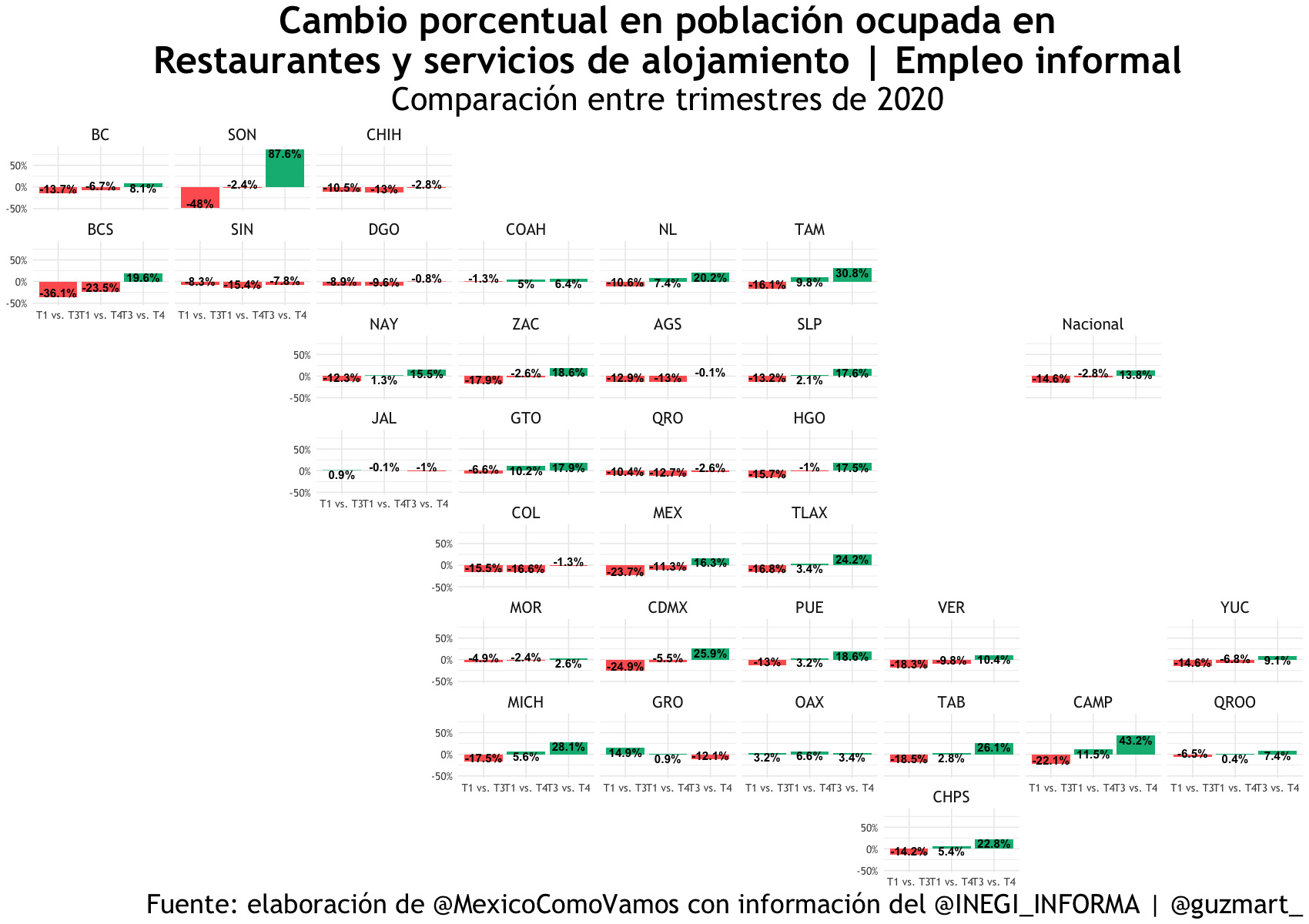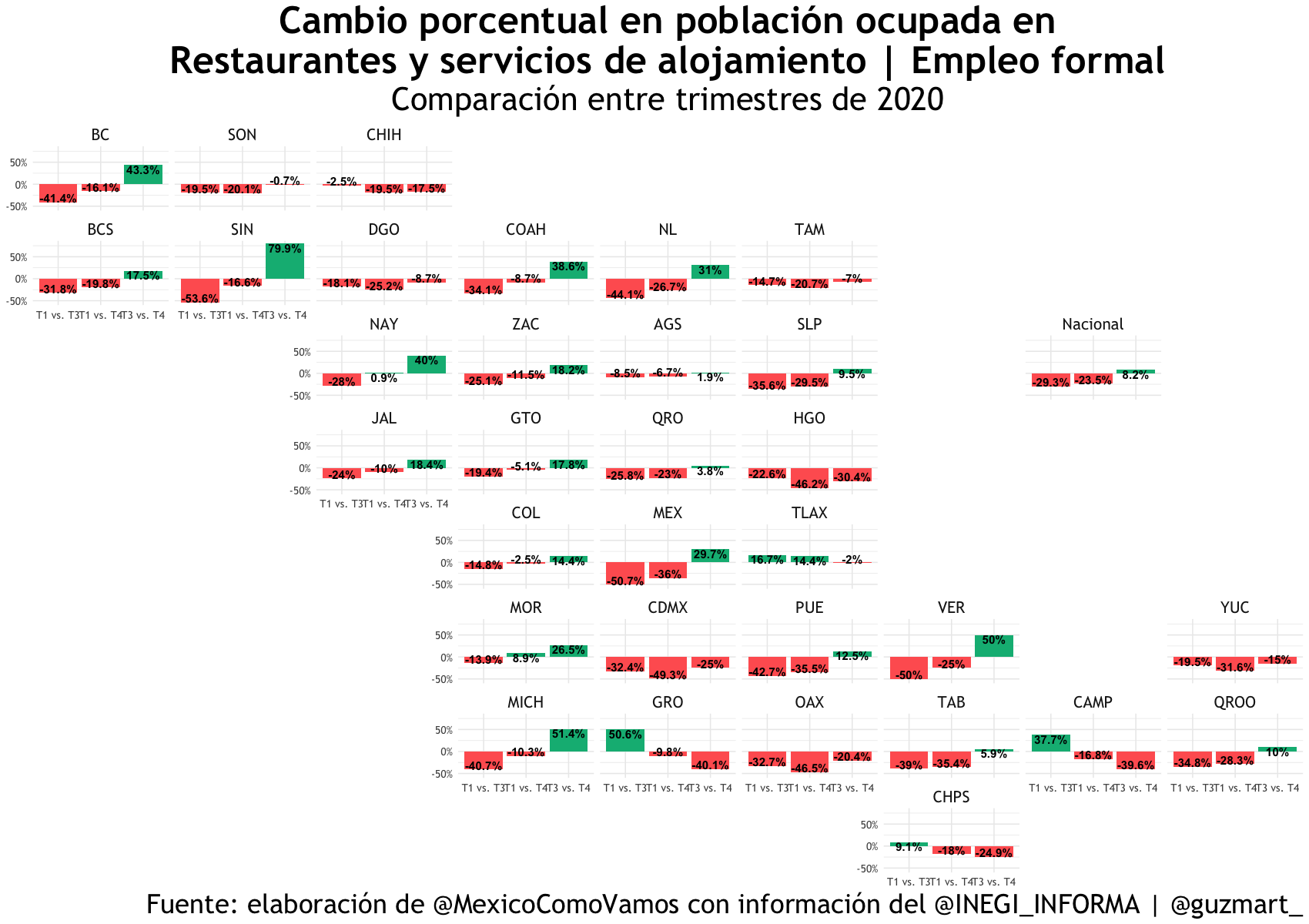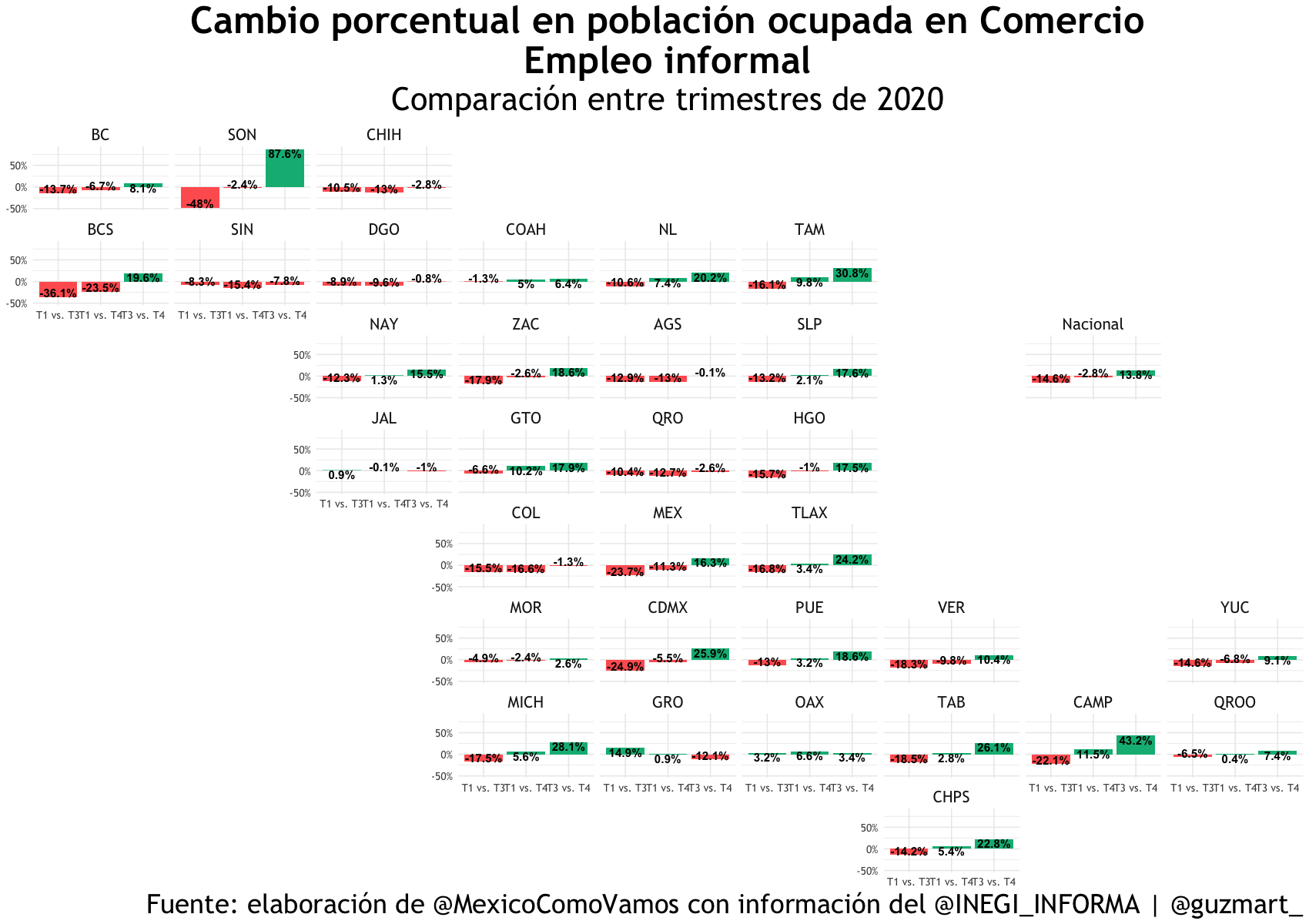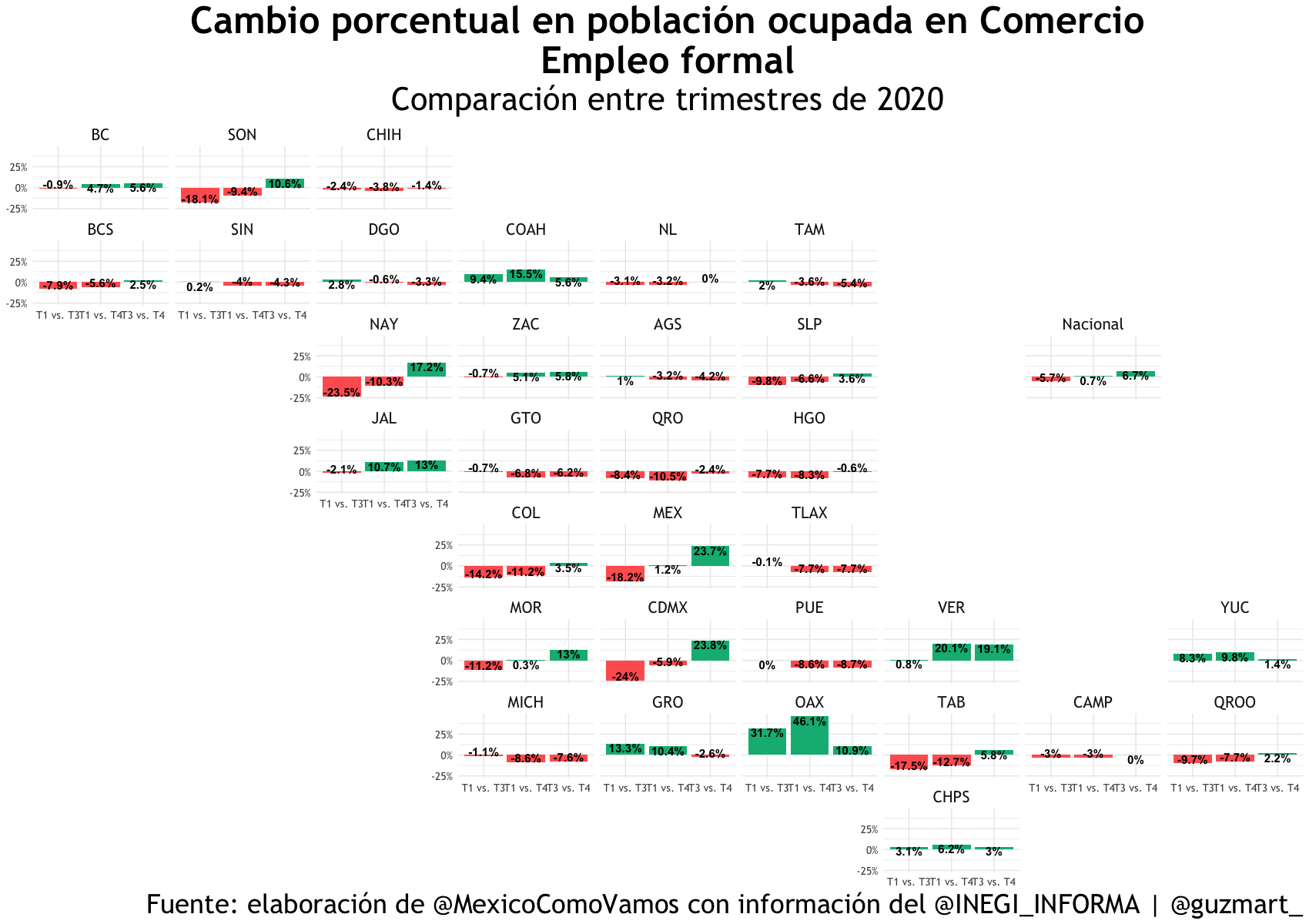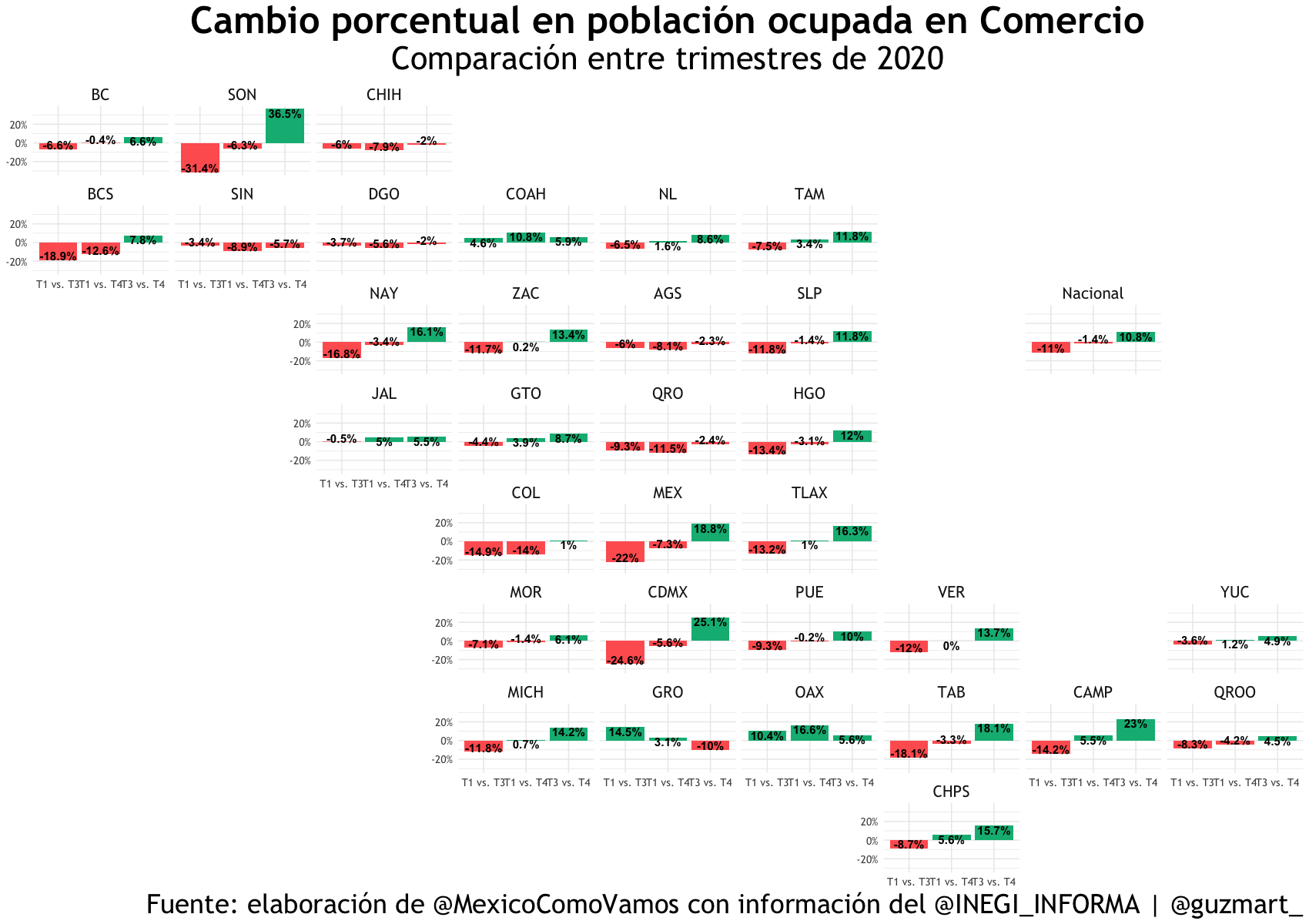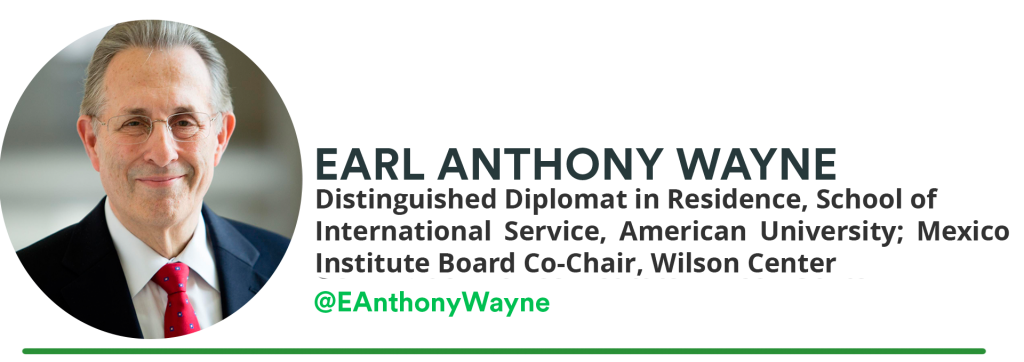
As the articles in this collection make clear, developing the potential of North America’s labor market demands a deeper understanding of the demographics and economic needs across the continent. It requires much more collaboration among governments, businesses, unions, educational institutions and other stakeholders to train, “reskill,” and “upskill” workforces with a wide range of capacities to meet the needs of many sectors and communities. Progress also requires numerous politically difficult changes to laws, regulations, policies and mindsets, among other steps.
The issues that must be addressed cover an immense range of challenges and involve a wide range of actors from the local, national, and international levels. For example, how to meet the relatively low skilled but substantial labor needs of agricultural and service sectors in across North America by making best use of the hemisphere’s labor pools is quite different than investing to meet the demanding requirements for highly skilled and educated workers in cutting edge technology fields, such as semiconductors, that will shape economic futures.
Substantial actions in both areas are needed. And, as papers in this collection discuss, the agenda also includes how to address the need for labor mobility among and across industry sectors and countries as well as how to better manage migration flows to bring out the best results for the societies sending and receiving workers.
Focusing on Skills Gaps
This article focuses on addressing the alarming skills gaps and mismatches in North America’s workforce, as key elements of the labor market shortfalls to tackle. If left unaddressed, these labor market deficits and disconnects will undermine North American economic competitiveness and sow the seeds for greater social dislocation, polarization and anti-migrant sentiment.
Long before the pandemic and the subsequent “great resignation,” employers in North America struggled to identify employees who possess the skills needed. Conversely, workers often found it difficult to acquire the education and training they needed to access job opportunities.
These mismatches continue to impede companies and sectors in Canada, Mexico, and the United States from realizing the potential inherent in the powerful production and commerce networks that their countries have been building since the early 1990s.
Skills gaps and shortages, for example in digital skills and emerging technologies, such as electric vehicles, remain as serious challenges for the region.
The three governments agreed in May 2023 to coordinate efforts to strengthen semiconductor production, including developing the workforce to support that effort as a key priority for boosting competitiveness. But this will be years long effort by governments, industry and educational institutions.
In 2024, the US Semiconductor Industry Association (SIA) reported that the industry will likely fall 67,000 workers short of projected demand for the technicians, engineers and scientists needed by 2030 if current trends continue. The SIA adds that this is only part of the 1.4 million workers proficient in technical skills that the US alone will need by 2030.
While semiconductors are an area of particular focus by the three North American governments, we could detail similar challenges in many sectors.
If the region is to cope with accelerating technological changes and demands for economies to compete with China and others, to adapt to demographic workforce changes, to migration flows, and to create buffers against unexpected shocks, North American leaders must formulate and invest in a serious North America workforce development agenda that builds institutions that create regular collaboration and sharing of best practices in meeting work skills needs across a range of sectors.
USMCA and NALS
The US-Mexico-Canada Agreement (USMCA) identified workforce development as action area and modest collaboration has begun as part of the USMCA’s Competitiveness Committee agenda.
The leaders of the three countries also made workforce development an action item in the work agendas approved by North American Leaders Summits (NALS) in 2021 and 2023.
That NALS agreement led ministers and private sector representatives to launched specific workforce development programs focusing the North American semiconductor industry in a June 2023 conference.
Also, the US and Mexico made workforce development a bilateral work topic since they revived the bilateral High Level Economic Dialogue (HLED) in 2021. They have organized specific workforce development events and projects, and have agreed to look at medical device supply chains as well as semiconductors.
In June 2024, the US National Institute of Standards and Technology (NIST) issued a very helpful guidebook for semiconductor education and workforce development. The guidebook can help businesses, governments, and educational entities across the continent. It provides recommendations for best practices covering workforce needs assessments; metrics and milestones; proven industry relevant training; strategic partnerships; and important worker recruitment and retention factors.
In another new program aimed at supporting workforce development in the US, the US Departments of Commerce, Labor and Education expanded partnership programs aimed at expanding collaboration on apprenticeship and other training programs with companies from Japan, Korea, Taiwan Austria German and Switzerland in 2024 with “Select Talent USA.”
This is all welcome progress, but again the need is for a more comprehensive institutional and regularized approach to support such progress across business sectors.
Need a Comprehensive Work Agenda to deal with ongoing Transformations
The United States, Canada and Mexico, however, have not yet invested in a comprehensive North American Agenda to address systematically the skills gaps and mismatches that continue to hinder the competitiveness and productive potential of North America’s workforces.
Over the longer term, ongoing technological transformations are likely to contribute to the creation of more and better jobs. However, during difficult transitions across many industries, companies, individuals, communities and governments need to prepare for the shocks that accompany “creative destruction,” and North America needs to compete with China and others.
By joining forces, North Americans can make more and better jobs a reality and ameliorate the disruptive effects of change.
Although technological change already posed significant challenges for the workforce, the pandemic forced businesses to reevaluate the role of technology in their workplaces, manage workers remotely, and rapidly expand internet commerce. The pandemic and subsequent recessions also opened serious discussions about the resilience, robustness, and reliability of supply chains across North America and worldwide.
The Organization for Economic Cooperation and Development (OECD) estimates that 14% of jobs across its member countries could disappear because of automation in the next 15 to 20 years, and another 32% are likely to change radically.
Core employment skills will change, increasing the demand for both “reskilling” (training for those displaced from jobs) and “upskilling” (training employees whose jobs are evolving), as well as brining new workers into the specific industries.
Digital literacy and foundational digital skills will be increasingly important: by 2030, for example, an estimated 77% of jobs in the United States will require the use of technology.
The emergence of ever more powerful tools using Artificial Intelligence (AI) has added additional concerns about further significant changes in jobs, skills, and the workplace across North America and internationally as part of the ongoing discussion about how governments might best manage this powerful new technology. The rapid development and use of AI are likely to complicate the elimination and emergence of new jobs and skills as part of the continuing transformation of the workplace and careers. The World Economic Forum’s 2023 Future of Jobs Report highlights how technology adoption, including AI, is likely to drive job and workplace transformation over the next five years. de tecnología, incluida la IA, impulsará la transformación de empleos y lugares de trabajo dentro de los próximos cinco años.
Investing More Resources and Coordination in Four Areas
To better address these gaps and to develop the potential of the region’s labor market, the United States, Canada, and Mexico need to increase and better target attention and investment to the development, adjustment, and training of their workforces and to build cross-continental collaboration.
North America needs an agreed strategy to develop and deploy a 21st century workforce with a focus on four areas:
(1) promoting common approaches to work-based learning.
(2) developing innovative use of transparent credentials that can be widely recognized across the region.
(3) enhancing labor market data collection and transparency to help workers and businesses understand trends; and
(4) creating collaborative mechanisms and fora to share lessons learned and best practices to enhance workforce development.
The implementation of this agenda depends on multistakeholder involvement, driven by collaboration among national and subnational governments, businesses, academia and education providers, unions, and nongovernmental organizations (NGOs).
Many of the most successful partnerships and results will come from practices and models established at local and regional levels and in specific sectors among a range of concerned stakeholders. But the lessons learned can likely be applied widely if fora are established for that purpose.
The three national governments should lead the way. As part of the North America Competitiveness Agenda, they should establish regular dialogues and working groups that bring together key national and subnational figures to discuss challenges and progress. The events and working groups can identify and highlight successful partnerships and programs under way across the continent. And they can foster an ongoing conversation about how to expand and implement those successes, sponsoring regular workshops on specific topics, for example.
The key to success will be making this work an ongoing priority for collaborative action across the continent and being willing to spend more on specific work force programs. In the OECD’s latest tally of total public expenditures on Labor Market Programs as a percent of GDP (2021 data), Mexico is last in 25th place, the US is second to last in 24th place, and Canada is better but still only ranked 16th among OECD members.
Under the Biden Administration, the US significantly boosted its spending on economic investment in America, including funding for workforce development with the Bipartisan Infrastructure Law, the Chips and Science Act and the Inflation Reduction Act (IRA). There is still much room for US federal and sub-federal investment in worker training programs, as is clearly the case in Mexico and Canada too.
There will be many ways to tailor specific priorities for national and regional work. Some might start by responding to the skills needs in key business sectors of regional or national importance, such as has already been discussed on semi-conductors or regarding aspects of “green” energy, for example, as the US is trying to do with parts of the IRA legislation. Policy space should be created to recognize and award specific examples of exceptional success and to publicize the needs, benefits and opportunities for upskilling and other learning programs.
Establish a Trilateral Workforce Development Taskforce
To guide and support future progress, Mexico, the US, and Canada should establish an overarching senior level trilateral workforce development taskforce with substantial private sector and academic participation to mark the path forward by investing more in proven workforce development efforts reflecting multistakeholder partnerships. There is evidence that smarter investment in these programs can have good effects on employment.
The taskforce could name working groups with participants from the public, private and academic sectors including federal and sub-federal participants to develop specific action proposals related to the four areas mentioned above and as described in the annex. An important part of effort will be to ensure that programs are effectively communicated to the public, so they reach more of the intended participants.
North America’s workers, businesses and communities will benefit greatly from pursuing an active dialogue and enhanced cooperation on workforce development as part of developing the potential of the continent’s rich labor market.
Annex: Detailed Discussion of the Proposed Focus Areas of Workforce Development among Mexico, the United States and Canada.
Issue 1. Expand Apprenticeships, Work-Based Learning and Technical Education
Work-based learning (WBL) or work-integrated learning programs encompass a wide range of models. Apprenticeships are a well-known example.
WBL mixes academic instruction and on-the-job learning equips individuals with relevant capabilities to meet the demands of the labor market and provides businesses with the trained employees they need. WBL approaches can address skills gaps by immediately placing workers in unfilled jobs, and the companies offering the apprenticeships can adjust the training to fit evolving needs.
WBL also provides a career path by offering workers paying jobs, certifications, and marketable skills. However, apprenticeships and other WBL initiatives will need to evolve with the pace of technological change and workplace needs. The OECD, for example, recommends that its member countries move away from front-loaded education systems to a model where skills are continuously updated to match changing demand. Small and mid-sized businesses (SMEs) need special attention, as the cost of upskilling and reskilling programs are prohibitive for them. Industry or sector partnerships with existing workforce stakeholders, especially government, can help smaller organizations to better reap benefits from training programs.
The federal governments of Canada, Mexico, and the United States should agree to create shared standards for the following:
- Define apprenticeships and other major types of work-based learning (WBL), as well as minimum criteria and quality standards.
- Agree on broad guidelines assigning roles and responsibilities to governments, industry, and intermediaries regarding the development, implementation, and funding of apprenticeships and other WBL.
- Create a trinational career and technical education and apprenticeship task force to identify best practices to promote apprenticeships and other WBL programs.
- Agree on elements of a marketing strategy to increase public awareness of the advantages of WBL and change negative public misperceptions of such programs.
- Build trinational “spaces” to foster ongoing dialogue between regional stakeholders to share best practices on WBL and training, and to strengthen public-private partnerships.
- Agree among the three countries on ways to incentivize and support companies, including SMEs, to develop training and learning programs for reskilling and upskilling their workforces.
Issue 2. Improve the Recognition, Portability, and Transparency of Credentials
Professional credentials provide a clear sense of what skills a worker has, facilitating labor market mobility, reducing selection costs for firms, and leading to higher wages and quality of workers.
Despite those possible benefits, the current, fragmented system for credentials across and within North America forms a barrier for workers of many skills levels. This is a major challenge across national borders, where various nontransferable credentials leave skilled and well-educated individuals underemployed. Higher education and employment services are also disjointed across the continent and too often are disconnected from employer and industry needs.
Making credentials comparable, transferable, stackable, and more transparent would support North American competitiveness and to help overcome skills gaps and mismatches. Much of this is happening de facto as learners and workers seek more credentials, but this effort can be better supported by governments.
The three North American countries should work to build agreement on the following:
- Develop a common language about credentials and competencies to facilitate understanding, quality, transferability, recognition, and the ability to stack or accumulate them.
- Develop or strengthen national competency frameworks and aligning them to the trinational common language of credentials and competencies.
- Develop guidelines to assess and validate informal learning and professional experience, and to identify skills associated to such experience.
Issue 3. Improve Labor Market Data Collection and Transparency
One major challenge is that neither public authorities nor the private sector and academia collect and share data on credentials, skills, workforce trends and training effectiveness. Improved data collection can allow people to make better-informed career decisions and can bring valuable transparency to the labor market. The speed of change in the economy also increasingly requires the development of real-time labor market information platforms, databases of in-demand skills and regular evaluation of skills programs.
The following elements should be agreed upon trilaterally:
- Develop norms to collect real-time labor market data and information in a consistent and homogeneous way so it is comparable across countries and across the region as well as easily accessible.
- Establish a North American Workforce Observatory (NAWO) aimed at developing a trinational online platform (linked to national platforms) to serve as a hub for real-time labor market data in the three countries, and for best practices from the public and private sectors.
- Develop guidelines to make the trinational NAWO platform and data tools openly available to stakeholders.
- Develop guidelines for metrics to evaluate workforce development programs and propose improvements.
Issue 4. Identify, Share and Spread Best Practices
The already rapid pace of change in the three economies is likely to increase further. The result will be a complex process of massive job creation, destruction, and transformation of workplaces and work/lifestyles that has been dubbed Industry 4.0 or the “Fourth Industrial Revolution.” The pandemic has added new lessons and additional use of technology as reflected in more remote work, which opens opportunities for more cross border work. The rapid development and use of Artificial Intelligence is likely going to complicate the continuing transformation of the workplace and careers. And continued migration flows add more important considerations.
The 2023 World Economic Forum’s Future of Jobs reports that employers anticipate a structural labour market churn of 23% of jobs in the next five years and that 44% of workers skills will be disrupted. The WEF report estimates that 6 of 10 employees will require training, but that only half of workers have access to adequate training opportunities today.
These training and educational needs also underscore the vital importance of partnerships with educational institutions. Private, public, and academic sector leadership is needed to develop models of how to adapt to the pace of change, and workforce development needs to be better incorporated into economic and industrial policy discussions going forward.
Possible trilateral initiatives include:
- Identify and share successful examples of private and public collaboration.
- Agree on approaches and strategies to encourage companies to collaborate with educational institutions, trade unions, sub-federal governments, and others to better align curricula with the evolving labor market needs, better connect graduates to the labor market, and foster the modernization of educational spaces.
- Build trinational spaces to share best practices on “Industry 4.0,” lessons from the pandemic, incorporating AI, and about building partnerships that link the priorities of business, academic, and government actors. Look for ways to strengthen models of remote or distance work that can function well across the continental value chains.
- Identify best practices for small and mid-sized enterprises to keep up with technological changes and talent creation.
- Establish trilateral research and innovation projects in strategic economic areas across the continent through grants and scholarships.
- Invest in evaluation to assess ongoing programs, future trends and prepare for future skills needs.
Implementing the North American Agenda
The North American Workforce Development Agenda should be a collaborative effort that includes North American governments, private sector, educational institutions, unions, nongovernmental organizations, and other stakeholders. It should institutionalize forums and mechanisms to convene both federal and subnational governments and other stakeholders to collaborate and innovate on identifying and sharing best practices.
References:
- This article draws from and builds on joint work by Wayne and Sergio Alcocer, President of the Mexican Council of Foreign Relations and the former Under Secretary for North American, Mexican Ministry of Foreign Affairs.
- Please see “America Del Norte 2.0: Forjar un futuro continental” (2024). North America 2.0: Forging a Continental Future (2023) https://www.wilsoncenter.org/publication/north-america-20-forging-continental-future (Also Cited under a Footnote notation at the top.)
- In addition, essential initial research on workforce development can be found in the Wilson Center’s December 2019 study North America 2.0: A Workforce Development Agenda. https://www.wilsoncenter.org/publication/north-america-20-workforce-development-agenda. We thank the co-authors and researchers of the 2019 report: Raquel Chuayffet Godinez, Grecia De La O Abarca, and Emma Sarfity and express much appreciation to Erick Guajardo, Lessan Melke and Cameron Wheeler for their editorial and research support. We also express thanks for the initial support for the initial study provided by RASSINI.
- Alden, Edward and Taylor-Kale, Laura. The Work Ahead.
- Batalova, Jeanne, Fix, Michael, and Bachmeier, James D. (2016).“Untapped Talent: The Costs of Brain Waste among Highly Skilled Immigrants in the United States,” .Migration Policy Institute. Retrieved from: https://www.migrationpolicy.org/research/untapped-talent-costs-brain-waste-among-highly-skilled-immigrants-united-states.
- Beckett, Elizabeth (May 3, 2023) “New Cars, New Skills: US Automakers Increase Demand for Electric Vehicle Skills”, Lightcast. Retrieved from: https://lightcast.io/resources/blog/electric-vehicle-skills.
- Boushey, Heather. (August 11, 2023)“Understanding the Economics of Investing in America: A Collection of Resources.” The White House. Retrieved from: https://www.whitehouse.gov/briefing-room/blog/2023/08/11/iia-resources/#:~:text=Working%20with%20Congress%2C%20the%20President,and%20the%20Inflation%20Reduction%20Act.
- Cazzaniga, Mauro, et al. (January 14, 2024). “Gen-AI: Artificial Intelligence and the Future of Work,” International Monetary Fund, . Retrieved from: https://www.imf.org/en/Publications/Staff-Discussion-Notes/Issues/2024/01/14/Gen-AI-Artificial-Intelligence-and-the-Future-of-Work-542379?cid=bl-com-SDNEA2024001.
- Chips for America (June 17, 2024) “CHIPS R&D Education and Workforce Development (EWD) Plan Guidebook”. Retrieved from: https://ssti.org/chips-rd-ewd-guidebookpdf.
- Holzer, Harry J. (December 21, 2023) “Can workforce development help us reach full employment?”, Brookings. Retrieved from: https://www.brookings.edu/articles/can-workplace-development-help-us-reach-full-employment/?share=interactive-1752095.
- Institute for WorkPlace Skills & Innovation America (2019) “It’s Time: Using Modern Apprenticeship to Reskill America,” , https://www.iwsiamerica.org/itstime/; and Urban Institute, “Center on Labor, Human Services and Population,”. Retrieved from: https://www.urban.org/policy-centers/center-labor-human-services-and-population/projects/competency-based-occupational-frameworks-registered-apprenticeships.
- Isakowitz, Zach. (April 8, 2024).“SIA Releases Policy Blueprint to Build the Future Semiconductor Workforce”, Semiconductor Industry Association. Retrieved from: https://www.semiconductors.org/sia-releases-policy-blueprint-to-build-the-future-semiconductor-workforce/.
- Johnson and Spiker. “Broadening the Apprenticeship Pipeline.”
- Markle Foundation (October 2019) “Digital Blindspot: How Digital Literacy Can Create a More Resilient American Workforce”. Retrieved from: https://www.markle.org/sites/default/files/2019-10-24-RABN-Digital-Literacy-ReportFINAL.pdf
- McKinsey Global Institute. (2017) Jobs Lost, Jobs Gained: Workforce Transitions in a Time of Automation. Retrieved from: https://www.mckinsey.com/~/media/McKinsey/Industries/Public%20and%20Social%20Sector/Our%20Insights/What%20the%20future%20of%20work%20will%20mean%20for%20jobs%20skills%20and%20wages/MGI-Jobs-Lost-Jobs-Gained-Executive-summary-December-6-2017.pdf.
- Mester, Loretta J. (April 14, 2022) “Successful Workforce Development Programs,” Federal Reserve Bank of Cleveland. Retrieved from: https://www.clevelandfed.org/en/newsroom-and-events/speeches/sp-20220414-successful-workforce-development-programs.aspx.
- Meltzer, Joshua P., Wayne, Earl Anthony, and Bitar, Diego Marroquín (July 19, 2023) “USMCA at 3: Reflecting on impact and charting the future,” Brookings. Retrieved from: https://www.brookings.edu/articles/usmca-at-3-reflecting-on-impact-and-charting-the-future/.
- National Skills Coalition. (n.d.). Digital skills corporate sign-on. Retrieved from https://nationalskillscoalition.org/digital-skills-corporate-sign-on/?emci=f605b115-d89d-ee11-bea1-002248223f36&emdi=4556b1fa-e59d-ee11-bea1-002248223f36&ceid=11613005.
- National Skills Coalition. “Partnering Up: How Industry Partnerships Can Bring Work-Based Learning to Scale”. Retrieved from: https://www.nationalskillscoalition.org/resource/publications/partnering-up-how-industry-partnerships-can-bring-work-based-learning-to-scale/.
- OECD (2019) “OECD Employment Outlook 2019: The Future of Work”. Retrieved from: https://www.oecd-ilibrary.org/employment/oecd-employment-outlook-2019_9ee00155-en.
- OECD. “Public spending on active labour market policies as a share of GDP.” Retrieved from: https://goingdigital.oecd.org/en/indicator/42.
- Office of the United States Trade Representative. (2023, September). FACT SHEET: 2023 U.S.-Mexico High-Level Economic Dialogue [Fact Sheets]. Retrieved from: https://ustr.gov/about-us/policy-offices/press-office/fact-sheets/2023/september/fact-sheet-2023-us-mexico-high-level-economic-dialogue.
- Talbot, David, PhD (June 6, 2023). “The North America Semiconductor Conference: Summary of Conclusions and Recommended Actions,” Milken Institute. Retrieved from: https://milkeninstitute.org/report/semiconductor-conference-north-america-summary.
- The White House. (2021, November 18). FACT SHEET: Key Deliverables for the 2021 North American Leaders’ Summit [Statements and Releases]. Retrieved from: https://www.whitehouse.gov/briefing-room/statements-releases/2021/11/18/fact-sheet-key-deliverables-for-the-2021-north-american-leaders-summit/.
- The White House. (2022, September 12). FACT SHEET: 2022 U.S. – Mexico High-Level Economic Dialogue [Statements and Releases]. Retrieved from:https://www.whitehouse.gov/briefing-room/statements-releases/2022/09/12/fact-sheet-2022-u-s-mexico-high-level-economic-dialogue/.
- The White House. (2023, January 10). FACT SHEET: Key Deliverables for the 2023 North American Leaders’ Summit [Statements and Releases]. Retrieved from: https://www.whitehouse.gov/briefing-room/statements-releases/2023/01/10/fact-sheet-key-deliverables-for-the-2023-north-american-leaders-summit/.
- U.S. Department of Commerce. (2023, May 24). Joint Statement on the Launch of the North American Semiconductor Conference and North American Ministerial Committee on Economic Competitiveness. [Fact Sheets]. Retrieved from:https://www.commerce.gov/news/fact-sheets/2023/05/joint-statement-launch-north-american-semiconductor-conference-and-north.
- U.S. Department of Commerce. (2024, June 24). U.S. Departments of Commerce, Labor, and Education Expand SelectTalentUSA Partnership to New International Markets, Increasing Quality Jobs and Apprenticeships through FDI. [Press Releases]. Retrieved from: https://www.commerce.gov/news/press-releases/2024/06/us-departments-commerce-labor-and-education-expand-selecttalentusa.
- Vilsack, Richael and LaPrad, Jeannine (May 25, 2022). “Data for an Inclusive Economic Recovery,” National Skills Coalition”. Retrieved from:https://nationalskillscoalition.org/resource/publications/data-for-an-inclusive-economic-recovery/
- Wayne, Earl Anthony (July 22, 2020). “The Future of the North American Workforce in a Covid-19 Scenario,” Pulse News. Retrieved from: https://pulsenewsmexico.com/2020/06/22/the-future-of-the-north-american-workforce-in-a-covid-19-scenario; and Wayne, Earl Anthony (May 1, 2020). “Don’t Neglect Preparing Our Workers for a Post-Pandemic Economy,” The Hill. Retrieved from: https://thehill.com/opinion/finance/494951-dont-neglect-preparing-our-workers-for-a-post-pandemic-economy.
- Wayne, Earl Anthony. (2024, February 20). “North American Workforce Development and Education Cooperation.” [Speech video]
- Wayne, E. A. (March 29, 2020).“Better Coordination Is Key to Reenergizing US-Mexico Trade,” The Hill. Retrieved from: https://thehill.com/opinion/finance/499898-better-coordination-is-key-to-reenergizing-us-mexico-trade.
- World Economic Forum (WEF). (2018). The Future of Jobs Report 2018. Retrieved from: http://www3.weforum.org/docs/WEF_Future_of_Jobs_2018.pdf
- World Economic Forum. (2023). The Future of Jobs Report 2023. Retrieved from: https://www3.weforum.org/docs/WEF_Future_of_Jobs_2023.pdf
- Wood, D. and Sands, C. (May 12, 2020). “Who Is ‘Us’? Thinking Like North Americans in Our Pandemic Response,” The Hill. Retrieved from: https://thehill.com/opinion/international/497305-who-is-us-thinking-like-north-americans-in-our-pandemic-response
Click on the postcard below to go to the site.
